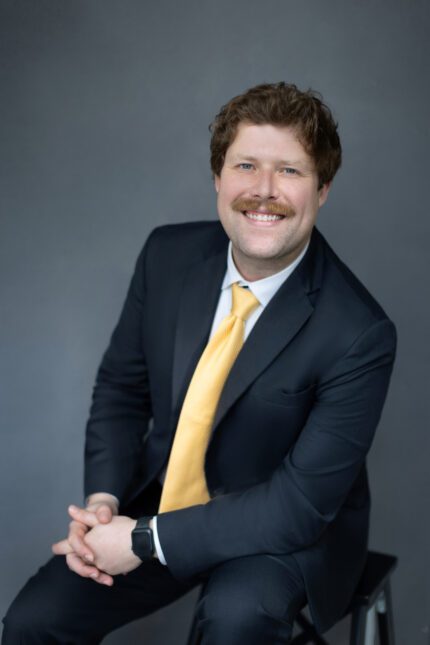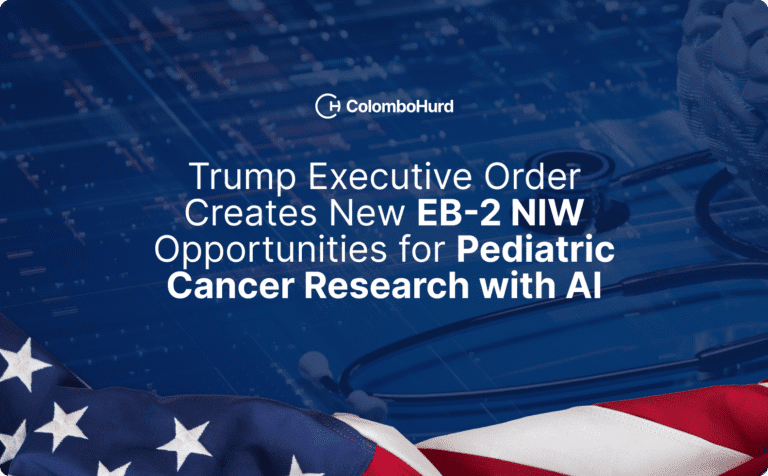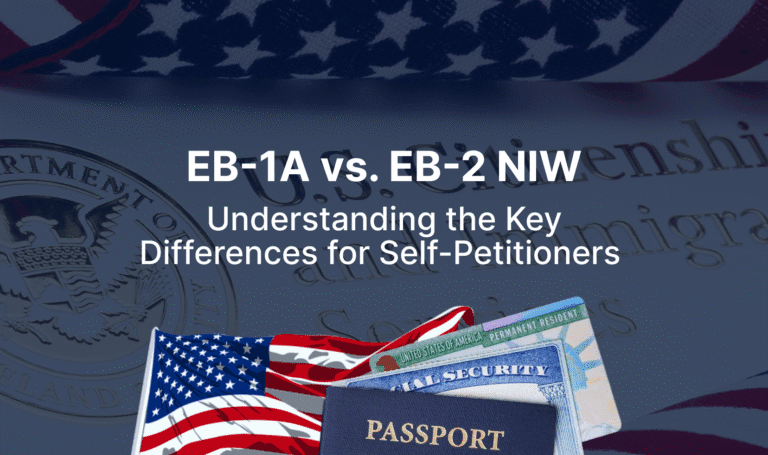The United States is experiencing a critical healthcare workforce shortage, with projections estimating a deficit of nearly 100,000 essential healthcare workers by 2028. This shortage is especially pronounced in rural and underserved areas.
One innovative response to this crisis has been the introduction of state-level reforms that expand jobs for international medical graduates (IMGs), physicians educated outside of the United States, offering new opportunities for them to practice medicine in the U.S.
Another important pathway is the EB-2 National Interest Waiver (NIW), which allows qualified internationally trained doctors to secure permanent residency without going through the lengthy PERM labor certification process or obtaining a job offer, if they can demonstrate their work is in the national interest of the United States. Physicians have unique pathways to demonstrate national interest for the EB-2 NIW, and this option is particularly well-suited for them. The EB-2 NIW allows foreign physicians to self-petition for their green card based on their vital contributions to the healthcare system.
Overcoming Traditional Barriers for International Medical Graduates
Historically, the path for an international medical graduate (IMG) seeking to practice in the United States has been complex and highly competitive. To obtain licensure, IMGs have typically needed to:
- Complete a U.S.-based residency program accredited by the ACGME
- Obtain certification from the Educational Commission for Foreign Medical Graduates (ECFMG)
- Pass all required steps of the United States Medical Licensing Examination (USMLE)
These requirements create significant hurdles, especially with limited residency slots and intense competition for positions. Eligibility requirements such as ECFMG certification, successful completion of all required USMLE steps, and substantial prior clinical experience remain stringent and have traditionally been viewed as inseparable prerequisites for licensure.
However, alternative licensure pathways for internationally trained physicians are beginning to emerge. The pathways theoretically broaden the pool of eligible candidates by allowing certain physicians to obtain provisional or, in some cases, full licenses without completing a U.S. residency. This shift reflects an important policy change, as states explore new ways to address the physician shortage while still maintaining safeguards for patient care.
New State-Specific Pathways for Foreign-Trained Physicians
To address the healthcare workforce shortage, several states have introduced legislation that provides alternative licensing routes for international medical graduate jobs. These pathways vary but often involve provisional licenses, supervised practice, and English proficiency requirements.
States that have introduced new pathways include:
| State | Eligibility Highlights | Path to Full Licensure |
| Arkansas | ECFMG certification, unrestricted home country license, completion of a verified residency program abroad, USMLE, U.S. clinical experience required | Provisional license → Full license after 2+ years supervised practice |
| Florida | ECFMG certification, USMLE Steps 1 & 2, foreign residency or equivalent, 4 years recent practice, job offer in FL | Waiver of U.S. residency → Full license after 2 years with employer |
| Idaho | Equivalent foreign training, 3+ years post-graduate practice, English fluency, sponsor clinic, USMLE Steps 1 & 2 | 3-year provisional license → Full license with Step 3 and positive review |
| Illinois | ECFMG certification, USMLE, 3 of last 10 years in practice, sponsoring institution | 2 years supervised practice → Restricted license → Full license after 4 yrs |
| Indiana | ECFMG certification, USMLE, 5 of last 6 years in active practice, foreign residency or similar, sponsor in underserved area | Limited license up to 6 yrs → Eligible for full license after 5 yrs |
| Iowa | ECFMG certification, USMLE, 5+ years practice abroad, English fluency, sponsoring facility | 3 years provisional practice → Full license |
| Louisiana | Equivalent foreign residency or 5+ years practice abroad, English proficiency, U.S. work authorization, job offer in licensed facility | 2 years supervised work → Eligible for full license |
| Massachusetts | ECFMG certification, USMLE Steps 1 & 2, 1+ year practice, employment in federally-qualified health center (FQHC)/hospital | Limited/restricted license 2–6 yrs → Full license with Step 3 |
| Minnesota | ECFMG certification, USMLE Steps 1 & 2, 5 years practice in last 10 yrs, employment in underserved area | 2 years supervised work + Step 3 → Full license |
| Nevada | Foreign license in good standing, recent practice or residency, USMLE Steps 1–3, English fluency, job offer in underserved area | Limited license (2 yrs) → Full license with positive evaluations |
| North Carolina | Foreign license or recent practice, 2 years postgraduate training abroad or 10 years active practice, exam competency, job offer in NC hospital or rural practice with on-site NC physician | 4 years supervised practice in rural hospital/clinic → Full license |
| Oklahoma | ECFMG certification, USMLE, foreign postgraduate training or 3+ years recent practice abroad | 3 years supervised practice → Full license |
| Oregon | Equivalent foreign training, 3+ years practice abroad, ECFMG certification, English proficiency | 4 years provisional practice → Full license with assessment |
| Rhode Island | ECFMG certification, foreign postgraduate training, 3+ years practice, USMLE Steps 1 & 2 | 3 years supervised IPR license → Step 3 + evaluation → Full license |
| Tennessee | Foreign residency or 3+ years practice abroad, USMLE Steps 1 & 2, sponsoring employer | 2 years provisional/temporary license → Full license with Step 3 |
| Texas | ECFMG certification, USMLE Steps 1 & 2, foreign residency, English fluency, employment in qualifying facility | 2 years provisional license → Full license with all USMLE/LMCC equivalents |
| Virginia | Foreign license, 5+ years practice, ECFMG certification, USMLE Steps 1 & 2, employment in underserved area | 2+ years provisional license → Step 3 + evaluation → Full license |
| Wisconsin | ECFMG certification, USMLE, foreign residency or equivalent, 5 years practice abroad, English proficiency | 3 years supervised practice → Full license |
These reforms are opening the door for physician jobs for international medical graduates in 2025, allowing more immigrant doctors to contribute where they are needed most.
How State Licensure Reforms Strengthen EB-2 NIW Cases
While licensure reforms are enacted at the state level, they directly affect how IMGs can qualify for the EB-2 NIW at the federal level.
According to Colombo & Hurd Immigration Attorney Wil Safrit, these state-level changes create important new opportunities for international physicians pursuing the EB-2 NIW:
“State licensure reforms represent greater flexibility in how a physician’s NIW case can be presented. For example, I often meet candidates who have completed USMLE Steps 1 and 2 and hold ECFMG certification, but lack Step 3 or a U.S. residency offer. Under the new state pathways, these physicians may still have clinical duties or practice opportunities to highlight in their petition, which makes their case stronger.”
- Establishing Positioning for Success
- The EB-2 NIW requires proof that applicants are “well positioned” to advance their work.
- With provisional or limited state licenses, IMGs can now demonstrate direct access to U.S. clinical practice, reinforcing their readiness to implement their proposed endeavor.
- Demonstrating National Importance
- These laws explicitly target healthcare shortages, especially in rural and underserved areas.
- An IMG licensed under such a program can point to legislative recognition that their work addresses a pressing U.S. national interest.
Mr. Safrit notes that these reforms reinforce the national importance of physicians’ work:
“When state governments implement policies specifically designed to integrate IMGs into the healthcare system, it provides compelling evidence of the national importance of their contributions and their broader potential impact.”
- Supporting Self-Petition
- The EB-2 NIW allows applicants to self-petition. Evidence of state licensure and employment in shortage areas provides concrete proof that the physician has both opportunity and impact, strengthening the case.
- Flexibility Beyond the Physician NIW
- The traditional Physician NIW requires a five-year service commitment in underserved areas.
- The Standard EB-2 NIW, when combined with state licensing pathways, offers a more flexible route to permanent residency while still recognizing the physician’s national contributions.
FAQs for International Medical Graduates Interested in Practicing in the U.S.
They give IMGs stronger evidence for two critical parts of the EB-2 NIW: that they are well positioned to advance their work (because they now have clear pathways into clinical practice) and that their contributions are of national importance (since the reforms are designed to fill physician shortages).
In most cases, IMGs must pass the USMLE to obtain licensure. However, several states now allow provisional or supervised practice without completing all traditional requirements. These pathways are designed to address workforce shortages.
The EB-2 NIW (National Interest Waiver) is an immigration category that allows foreign nationals with advanced degrees or exceptional ability to obtain a green card without employer sponsorship. For physicians and medical researchers, it provides a pathway to permanent residency while recognizing the national importance of their work addressing the nation’s healthcare needs.
The Physician NIW requires a five-year service commitment in underserved areas. The Standard EB-2 NIW offers more flexibility, focusing on whether your work has substantial merit and national importance, making it attractive to IMGs.
Exploring state-based alternative licensing, obtaining U.S.-recognized credentials, and applying through immigration pathways like the EB-2 NIW can all improve opportunities for international medical graduates.
Conclusion
The landscape for international medical graduates in the United States is changing. With new state licensing laws, foreign-trained physicians are gaining access to international medical graduate jobs that were once out of reach. When combined with immigration opportunities like the EB-2 NIW, these reforms create a promising future for IMGs while helping solve the nation’s healthcare workforce shortage.
As Mr. Safrit explains:
“These laws give us a new way to argue national importance, based on state governments recognizing the value of IMGs. They also allow for a more flexible ‘well-positioned’ argument, since physicians don’t always need to have completed every exam or requirement that a U.S. resident physician would in order to demonstrate they are ready to contribute.”
By leveraging these new pathways and the EB-2 NIW category, foreign medical professionals can make significant contributions to the U.S. healthcare system while pursuing permanent residency and a green card. Navigating these evolving laws and immigration requirements can be complex, and working with experienced immigration attorneys helps ensure that applications are presented effectively and in compliance with both federal and state regulations.




